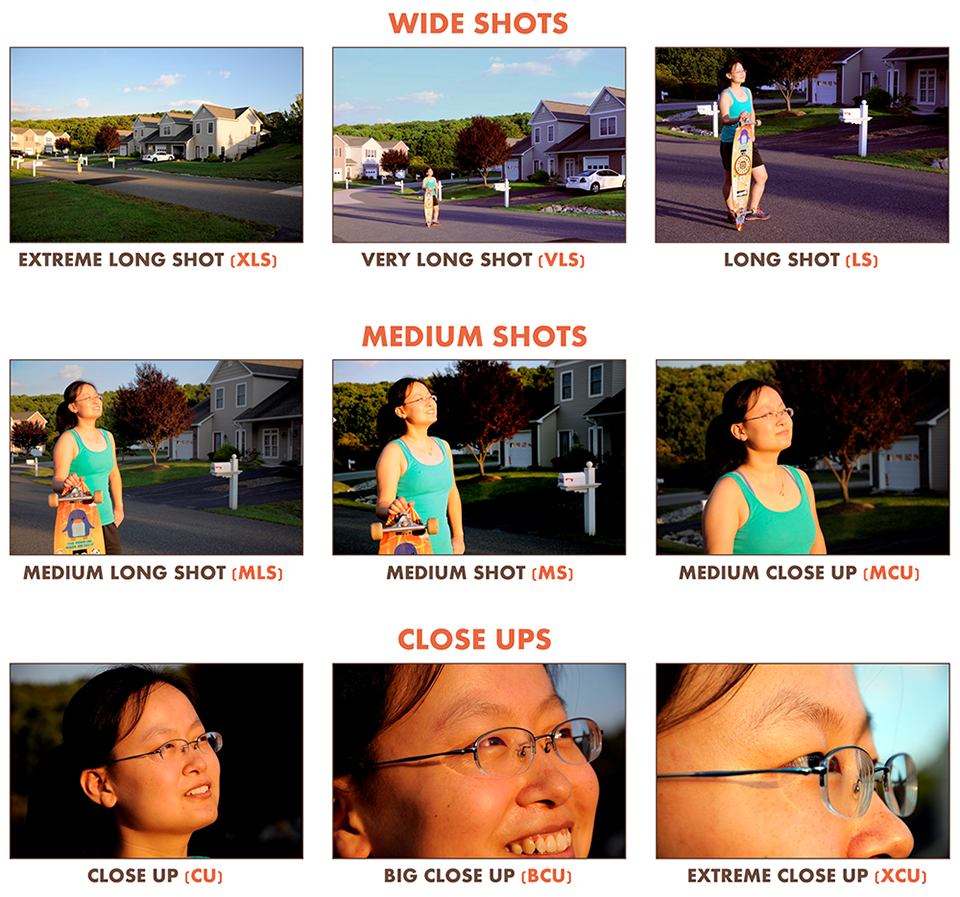Lesson 6: Visuals that move
Shot Sizes
One of the aspects of film language that could help set a scene is the shot size. Shot size refers to how much of your subject(s) and surroundings are visible in the frame. Specific shots are generally used for different purposes and convey different meanings. Using multiple shot sizes in your video can make your video more dynamic and interesting. Please see a summary of the different shot sizes below.

Shot sizes
Wide Shots
Wide shots show the full scene and the full size of a person. Generally these are your “safety” shots (Artis, 2008). If your close-ups and medium shots do not work out, you always have wide shots to fall back on as these shots generally cover the full scene. Wide shots emphasize the setting and location to your audience and are often used as establishing shots. Establishing shots reveal where your video takes place. This can be the exterior of a school or other building, a bird’s eye view of a city or landscape, or another shot that shows where your movie is taken. These shots show the atmosphere and activity of a location (Artis, 2008).
Medium Shots
Medium shots show anything from the knees up to the person’s upper body and face. Medium shots are a good choice to show a subject’s body language and gestures to your audience. They also show what your subject wears and their actions or movement. When you take medium shots of people, it is recommended to avoid cutting the shot around people’s joints. For example, rather than cutting the shot at someone’s knees, shoot your video slightly below or above the knees, as you can see in the screenshot of the medium long shot (MLS).
Close Ups
Close ups generally show a person from their chest or shoulders and up. These shots can be used to emphasize someone’s expression and dialogue and to draw your audience closer to your subject on the screen (Artis, 2008). They draw attention to specific details on the screen and your subject’s emotions. They are more dramatic than medium or long shots.
Please watch the video below to learn more about different shot sizes and how you can use them.
Quick guide to shot size from Tom Barrance on Vimeo.